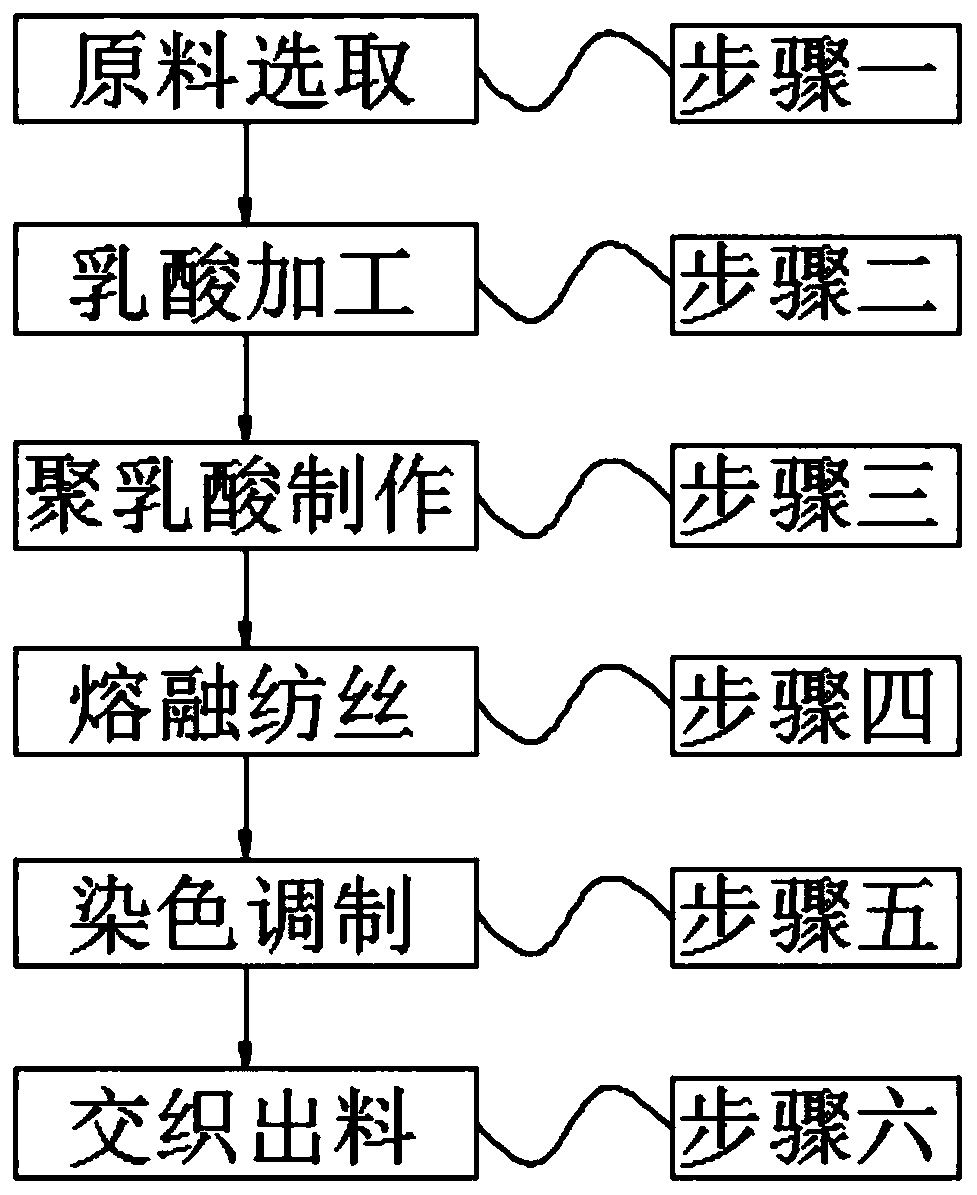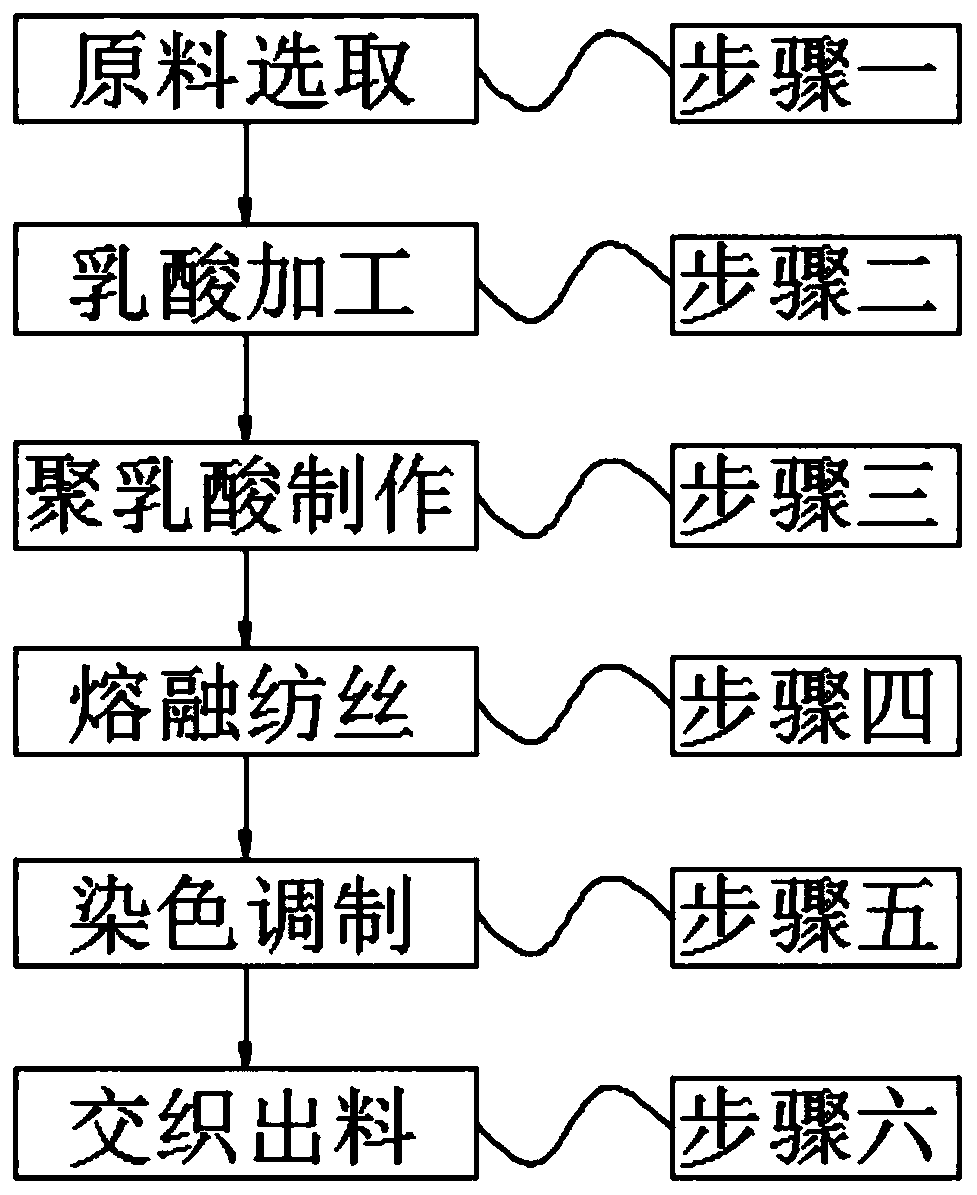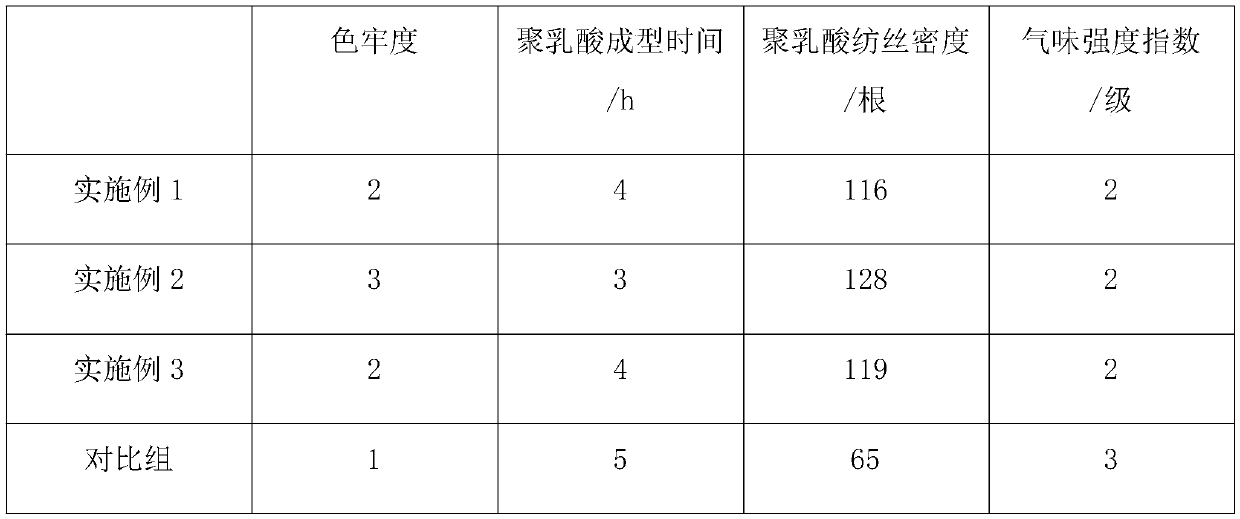Polylactic acid based cotton interwoven fabric and processing method thereof
A processing method and polylactic acid technology, applied in the field of interwoven cotton, can solve problems such as unfavorable user health, low color fastness, poor fabric workmanship, etc., and achieve the effects of low cost, high density and low pollution
- Summary
- Abstract
- Description
- Claims
- Application Information
AI Technical Summary
Problems solved by technology
Method used
Image
Examples
Embodiment 1
[0028] A polylactic acid-based cotton interwoven fabric and a processing method, the formula comprising: starch, cellulose, calcium carbonate, milk of lime, polyester fiber, acetone, dehydrating agent, catalyst and dyeing agent, the mass percentages of each component are respectively : 27% starch, 15% cellulose, 8% calcium carbonate, 20% milk of lime, 15% polyester fiber, 5% acetone, 5% dehydrating agent, 3% catalyst and 2% dyeing agent.
[0029] A cotton interwoven fabric based on polylactic acid and a processing method thereof, comprising the following steps: Step 1, raw material selection; Step 2, lactic acid processing; Step 3, polylactic acid production; Step 4, spinning processing; Step 5, dyeing production; Sixth, interweaving and discharging;
[0030] Wherein in the above-mentioned step one, according to the mass percentage content of each component is respectively: 27% starch, 15% cellulose, 8% calcium carbonate, 20% milk of lime, 15% polyester fiber, 5% Acetone, 5%...
Embodiment 2
[0042] A polylactic acid-based cotton interwoven fabric and a processing method, the formula comprising: starch, cellulose, calcium carbonate, milk of lime, polyester fiber, acetone, dehydrating agent, catalyst and dyeing agent, the mass percentages of each component are respectively : 27% starch, 20% cellulose, 8% calcium carbonate, 15% milk of lime, 15% polyester fiber, 5% acetone, 5% dehydrating agent, 3% catalyst and 2% dyeing agent.
[0043] A cotton interwoven fabric based on polylactic acid and a processing method thereof, comprising the following steps: Step 1, raw material selection; Step 2, lactic acid processing; Step 3, polylactic acid production; Step 4, spinning processing; Step 5, dyeing production; Sixth, interweaving and discharging;
[0044] Wherein in the above-mentioned step one, according to the mass percent content of each component is respectively: 27% starch, 20% cellulose, 8% calcium carbonate, 15% milk of lime, 15% polyester fiber, 5% Acetone, 5% de...
Embodiment 3
[0056] A polylactic acid-based cotton interwoven fabric and a processing method, the formula comprising: starch, cellulose, calcium carbonate, milk of lime, polyester fiber, acetone, dehydrating agent, catalyst and dyeing agent, the mass percentages of each component are respectively : 27% starch, 25% cellulose, 8% calcium carbonate, 10% milk of lime, 15% polyester fiber, 5% acetone, 5% dehydrating agent, 3% catalyst and 2% dyeing agent.
[0057] A cotton interwoven fabric based on polylactic acid and a processing method thereof, comprising the following steps: Step 1, raw material selection; Step 2, lactic acid processing; Step 3, polylactic acid production; Step 4, spinning processing; Step 5, dyeing production; Sixth, interweaving and discharging;
[0058] Wherein in the above-mentioned step one, according to the mass percent content of each component is respectively: 27% starch, 25% cellulose, 8% calcium carbonate, 10% milk of lime, 15% polyester fiber, 5% Acetone, 5% de...
PUM
 Login to View More
Login to View More Abstract
Description
Claims
Application Information
 Login to View More
Login to View More - R&D
- Intellectual Property
- Life Sciences
- Materials
- Tech Scout
- Unparalleled Data Quality
- Higher Quality Content
- 60% Fewer Hallucinations
Browse by: Latest US Patents, China's latest patents, Technical Efficacy Thesaurus, Application Domain, Technology Topic, Popular Technical Reports.
© 2025 PatSnap. All rights reserved.Legal|Privacy policy|Modern Slavery Act Transparency Statement|Sitemap|About US| Contact US: help@patsnap.com



